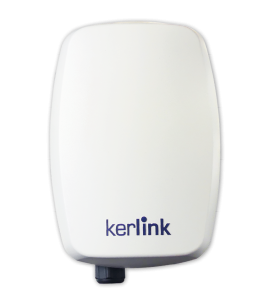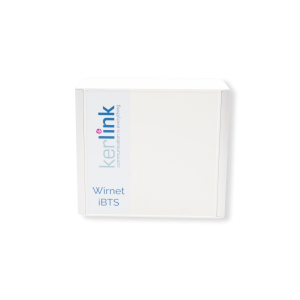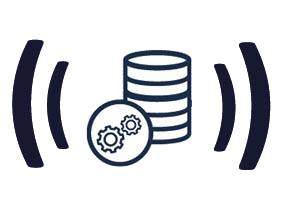Infrastructures & Hubs
Security, Maintenance and Operations Challenges are Driving IoT Adoption for Critical Infrastructures.
Infrastructure Engineering

As critical assets like bridges, dams, tunnels, roads, railways tracks and specific equipment like stadiums, airports or concert halls are constructed and age, it becomes increasingly apparent for both owners, operators and civil engineering organizations to ensure structures safety and longevity. For example, nearly 231,000 U.S. bridges need major repair work or should be replaced, among which more than 46,000 are “structurally deficient” and “in poor condition” although they are crossed 178 million times a day[1]. Structural health monitoring (SHM) is the process of monitoring, inspecting and assessing the condition of a structure in order to collect information on its current state by tracking key variables like vibration, inclination, tilt, strain, cracks, boundaries, stress and other physical phenomena and their related responses and conditions. This monitoring aims to assist engineers in non-intrusive evaluations to detect, identify and locate possible damage as well as its extension and to calculate the remaining life of an asset, the requested maintenance and repair and to avoid possible accidents. If non-destructive testing is the standard practice in the assessment of structural integrity, it has so far mainly been a manual exercise where engineers have to go in the field to take on-site measurements, thus limiting the number and the frequency of structures examined and impacting productivity. Manual data collection is slow and it can be inaccurate, often complex and always time intensive. Technicians and engineers have not only to adapt to harsh environment and difficult to access locations, but there is also a high risk of missing critical information due to the lack of investigation and processing speed: conditions can change between readings, making data irrelevant. And this way of doing things is highly inefficient considering the increasing number of structures built to support booming urbanization. IoT brings speed, versatility and scalability to structural health monitoring to increase the number of critical data collected to increase security and simplify operations.
IoT sensors and devices can help civil engineering and structural health monitoring by enabling the ongoing monitoring of various types of structures and for different set of data. Wired solutions are difficult, costly and inefficient considering the size and complexity of the structures to be monitored. IoT sensors, connected to a wireless low-power wide-area (LPWA) IoT network, can monitor and collect key data like aging materials and constructions mechanical (tensile stress, compressive stress, displacement, deformation, acceleration, degradation), physical (temperature, humidity) or chemical parameters (pH, metal oxidation). These non-invasive methods will leverage the deployment of intelligent sensors in specific checkpoints identified by engineers to anticipate and detect vulnerabilities. IoT sensors can also help to automate environmental factors monitoring to analyze how it may affect construction work over time or during specific events. This geotechnical monitoring can help to detect changing pressures due to soil consolidation, ground modification, water running or wind erosion and record evolution over time to assess their impact on foundations mechanical stress, safety and integrity. Structure health monitoring systems can also provide valuable insights in case of accidental environmental (flood, fire, landslide…) or human damages (car crash, collisions, explosions…) to assess the resiliency and robustness of the infrastructure. Recording all these data digitally can also improve maintenance process for critical structures and provide an unmatched knowledge base for the design and conception of new structures, adapted to local conditions and use. This is also a main step forward to introduce digital twin type of management and maintenance to develop a new mechanical engineering practice and digital engineering innovation.
Kerlink industrial-grade IoT solutions, powered by LoRaWAN technology, can bring the low power, long range and versatile IoT network requested
Kerlink industrial-grade IoT solutions, powered by LoRaWAN technology, can power the robust low power and long range IoT network requested to connect structural health monitoring (SHM) sensors and solutions. Kerlink industrial-grade IoT solutions can deliver the performant and versatile outdoor and indoor IoT connectivity to help technicians and engineers to eliminate on-site visits and manual reading, thus reducing time and costs dedicated to routine supervisory tasks for structures controls. Kerlink LoRaWAN carrier-grade gateways and network management tools enable remote automated monitoring, from the construction steps to the ongoing maintenance operations, of a wide range of essential constructions and assets. Combined with machine learning and artificial intelligence capabilities, these data streams can fuel digital twin models to improve remote analysis and simulation to create new digital engineering solutions and mitigate both human, operational and financial risks of deteriorating structures. Kerlink LPWA IoT network solutions are easy to deploy, simple to use, flexible, scalable and cost efficient to operate, over time.
Smart Airports
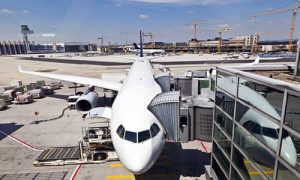
According to the Airports Council International (ACI) World Airport Traffic Report, there are currently round 17 700 commercial airports in the world. Adding all airports, aerodromes and airfields, both civilian and military throughout the world, the figure rises round to 41 800. Airports, and especially the largest hubs, are extremely complex and regulated environments and challenging businesses to operate, combining multiple operations in the same place: property and real estate management, building operations, infrastructure monitoring, travelers experience, airlines activities, ground support equipment (GSE), maintenance and repair operations (MRO) security management and flight orchestration, among many others. Airport operators and managers are constantly investigating how to improve and automate processes to cut costs and to adapt operations to the traffic, especially in times of pandemics and travels restrictions. The expected air traffic increase in the coming years will also lead to capacity challenges – especially for European countries where major international airports have limited options to extend their infrastructures – and the need to deploy new processes and solutions to treat more passengers and to improve aircraft servicing, to both shorten aircraft turnaround time (TRT) and reduce minimum connection time (MCT). IoT can provide multiple solutions to streamline operations, improves services for passengers and reduce operating costs for airports.
IoT sensors and devices can help airports operators to efficiently manage their operations. IoT can first improve building management for energy, water, temperature or lighting monitoring, as well as waste management, to improve airports sustainability, reduce their greenhouse footprint and cut operational costs. IoT can enable predictive maintenance for assets like escalators, lifts, conveyors or air conditioning systems, to increase uptime and reduce operating costs. IoT sensors can smooth travelers routing to available parking places, while security management can directly benefit from IoT to detect fires and water leaks, or monitor control access and crowds in real-time. Used for air quality control, ambiance and cleanliness monitoring, IoT can improve visitors’ safety and staff’s optimal working conditions, especially in times of pandemics like COVID-19. IoT devices and sensors can also be used for indoor and outdoor mobile assets tracking to get their instant inventory, availability and location; passengers can get information on trolleys and wheelchairs, while ground operators can locate ground support equipment[1] (GSE) or containers, scattered throughout baggage basements and aprons. IoT can also help to improve door-to-door passenger experience by enabling on-spot dynamic surveys of travelers’ satisfaction about cleanliness, comfort, food or information (the average time spent at the airport represents up to 60% of the overall travel time). IoT sensors, combined with IoT beacons and IoT wireless networks, can also help to analyze passengers flows and travelers’ behaviors in arrival and departure halls, shopping areas, lounges and piers, to measure flows at different times of the day. IoT sensors and devices can also help to monitor critical infrastructures and to manage key equipment like runways lights and signs. Weather conditions can also be easily monitored on the ground by autonomous stations connected to the IoT network.
Kerlink industrial-grade IoT solutions, powered by LoRaWAN technology, can deliver the robust, low power and long range private IoT network requested to connect smart airport use cases to control installations, optimize processes and improve travelers’ satisfaction. Kerlink carrier-grade indoor and outdoor LoRaWAN gateways and network management tools enable airport managers and operators to make airport operations smoother and passengers’ convenience and comfort better. Collected data immediately alert airport authorities to perform maintenance based on actual usage, eliminate the need to collect usage data manually and reduce repair and maintenance costs. The real-time information also enables facility management contractors to take proactive action to remedy malfunctions or untidy conditions. Combined with GPS-enabled IoT trackers or using Kerlink LoRaWAN network-based native geolocation capabilities, assets can be quickly tracked and located, indoor and outdoor.
Smart Railways
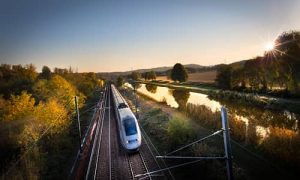
Both passengers and freight trains delays are often treated like an inevitable issue despite the direct costs they incur for rail companies and the indirect costs for the economy of the countries (people who are late at work or goods and materials that are not delivered on time). For example, in 2018, one third of Amtrack trains experienced delays, thus costing $41,9 million per year to the company only[1]. Delays are mainly resulting from technical issues from tracks, signaling, power supply or traction equipment. Track geometry issues, and especially vertical displacement, can be a major issue potentially leading to derailments. And even if railway companies are, on average, spending round 20% of their revenues on maintaining and adding capacity (an additional tracking mile costs between $1 million to $2,5 million), improving maintenance efficiency and responsiveness is a major challenge, not only for security reasons but also to improve railways operators bottom line. Smart railroad management, leveraging IoT capabilities, can bring greater visibility, predictability and, consequently, control of their operations. Getting the ability to monitor and detect rail or signals defects, to locate and qualify power issues, to identify rail-side equipment or to monitor dangerous environmental conditions are key insights to improve security and service punctuality and to cut costs. The same way, railway operators can quickly locate and get an instant status of locomotives, wagons or coaches or identify available sidings or unoccupied marshalling tracks.
IoT sensors and devices can help to efficiently maintain legacy infrastructures and to increase equipment uptime. IoT now enables to connect systems that were previously not connected and not designed to support connectivity, while extending the reach of instant automated monitoring to remote stations (worldwide railway networks have, on average, 70% to 80% of their stations geographically dispersed, with low passenger footfall but with a key role in connecting the whole country). Rail temperature and vibration monitoring is a first good example. In sunny conditions, with increasing temperatures – especially on the ground where temperature can be up to 25°C higher than the atmospheric perceived temperature -, rails tend to heat up, to expand and to buckle, thus modifying their geometry and increasing the risks of derailment. Autonomous and battery-powered IoT sensors, using a wide range and low power IoT network, can monitor rail temperature and warping, thus delivering more efficient and direct insights than relying on estimates based on inaccurate and unlocalized weather forecasts. IoT sensors can, the same way, measure pressure, junctions and distance to collect complementary data for engineers to assess the situation and its related risks. IoT sensors can also collect information from catenaries to ensure their appropriate tension, detect icing or inappropriate temperature. IoT sensors can additionally help to monitor railways critical infrastructures, like bridges, tunnels, stations, catenary supports or anti-avalanche and anti-slide walls. Smart metering can also be used to improve energy management and detect power supply abnormalities while improving railways operations global sustainability and greenhouse footprint. IoT sensors and actuators also enhance predictive maintenance for stations – like ticketing machines, information displays, emergency call points, escalators, lifts or HVAC systems -, trackside equipment – signals, power supply, switches – and rolling stock – battery systems voltage levels, water and fluids tank levels, doors opening / closing -. IoT sensors can also power energy-efficient and easy-to-deploy asset location and inventory for rolling stock while sensors can be deployed to monitor local weather conditions and get near-real-time insights on environmental conditions of tracksides to anticipate potential hazards – like rockfalls, flood, icing or obstructions on the tracks -.
Kerlink industrial-grade IoT solutions, powered by LoRaWAN technology, can deliver the robust, low power and long range IoT network required to connect smart railways use cases, especially for infrastructures, equipment and environment monitoring. Rail operators need to streamline operations to face increasing competition, as a result of evolving regulations, to secure aging legacy infrastructure and equipment and to face increasing maintenance costs, while also keeping on delivering the expected service for users, even in remote areas. Kerlink robust and performant carrier-grade LoRaWAN gateways and network management tools help to connect sensors and to collect key data to fuel cross-application automated workflows. Getting actionable data and near-real-time alerts simplifies maintenance prediction and schedules, increases uptime by avoiding unexpected failures, enables timely decisions on operations and helps to better inform conductors of potential hazards on their way. Combined with GPS-enabled IoT trackers or using Kerlink LoRaWAN network-based native geolocation capabilities, assets can also be quickly tracked and located to reduce workforce intensity, manual and visual checking and reduce delays to service. Using LPWA IoT connectivity, powered by Kerlink, helps to ensure global operations and economic viability for railway operators.
[1] https://usa.streetsblog.org
Smart Ports
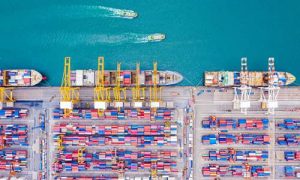
Today ports are essential to the global economy as they are responsible for up to 90% of goods and freight being exchanged worldwide. As they are part of both larger transport and logistics (T&L) supply chains and, in themselves, a cluster of companies operating in this industry, ports are increasingly challenged to improve efficiency, productivity and scalability, while at the same time being asked to ensure a safer workplace, to grow in a sustainable way and to minimize their environmental footprint. The OECD predicts that global container handling will reach a level four times higher than the current one by 2030, and five to six times by 2050. The size of container ships has also grown quickly over the last two decades and their capacity has doubled, with the latest mega-container vessels capable of carrying more than 20 000 standard containers. This quest for economies of scale should benefit to shipping companies, but they are in practice hampered by ships underutilization and the over-capacity thus created[1]. At the same time, another OECD study published in 2012 detailed that most efficient container ports operate only at 70% to 80% of their maximum efficiency level, because of their technical gap, followed by oil terminals and far ahead of coal and grain terminals[2]. Handling, planning and processing are the key challenges for ports to improve both port community systems (PCS) – to increase ports internal information and traceability exchange for better visibility of cargo flows – and cargo community systems (CCS) – to improve the quality of service for ports users and cut trucks/trains waiting and turn-around time in terminals – for better overall productivity[3]. Smart ports can combine digitalization and IoT in the daily seaports and inland ports activities to streamline operations and optimize equipment to cut operational costs. Smart ports market is estimated to reach $5.3 billion by 2024 with a CAGR of 25 % from 2019[4].
Smart ports solutions combine a network of IoT sensors and devices, connected to a private wired and / or wireless IoT network, collecting and transmitting data in real-time to their cloud-based data centers to fuel IoT applications. IoT sensors and devices can be of different types (mixing ultrasonic sensors, inertial sensors, radars, cameras, imaging sensors, actuators or RFID readers, among others) to collect the required data. For example, containers management can mix, on the one hand, digital manifests for content inventory and customs information – dynamically associated to the container and securely authenticated using blockchain – and, on the other hand, battery-powered IoT devices – used for instant containers traceability, tracking, location and secure locking -. Seamlessly used on board of vessels and offboard, on the terminal platforms or on the trucks, these solutions reduce manual handling and visual inspection, remove burdens on customs for international deliveries and can provide useful information, like warnings, certifications or safe inspection protocols. IoT sensors and devices can also be used for uptime monitoring, operations control and predictive maintenance of a wide range of key harbors assets like rail-mounted gantries (RMG), rubber-tired gantries (RTG), straddle carriers, sprinter carriers, terminal tractors, reach stackers, containers handling cranes or ship-to-store cranes, among others. IoT sensors can also help to get real time insights on energy meters, lighting, pumps, engines or gates to get real-time data on activity, performance and reliability to help to detect failures and quickly locate the issue for maintenance teams. IoT solutions can also be used for assets tracking, location and mapping, not only for containers and goods, but also for costly equipment, to prevent loss, fraudulent usage or theft. The same way, IoT can power waste management systems to improve waste collection operations and ensure their appropriate disposal and treatment, thus enabling ports to comply with stringent environmental norms and regulations. Connected wearables or devices can also monitor and track port workers and raise alerts in case of specific pre-defined situations like inactivity, non-appearance, being off site (geofencing), and trips or falls.
Kerlink industrial-grade IoT solutions, powered by LoRaWAN technology, can deliver the robust, low power and long range IoT network required to connect smart ports use cases, especially for containers tracking, equipment and cranes predictive maintenance, assets monitoring, energy management and security enforcement, throughout the port wide area. Port operators and staff are running against the clock to avoid penalties, expenses and delays and need to constantly improve productivity and efficiency. Kerlink robust and performant carrier-grade outdoor LoRaWAN gateways and network management tools help to flexibly deploy a tailored private IoT network for smart ports to collect data in near real-time and automate monitoring. Combined with GPS-enabled IoT trackers or using Kerlink LoRaWAN network-based native geolocation capabilities, containers, equipment and assets can also be quickly tracked, traced and located in the port area, avoiding visual checking and improving efficiency. Kerlink LPWA IoT network solutions are easy to deploy, simple to use, flexible to configure, scalable and cost efficient to operate, over time.
[2] https://www.oecd-ilibrary.org/fr
[4] https://www.businesswire.com
Kerlink IoT Solutions for Smart Infrastructure & Hubs
IOT NETWORK

Kerlink & Adveez
Adveez optimizes airport asset monitoring and tracking using LoRaWAN connectivity



